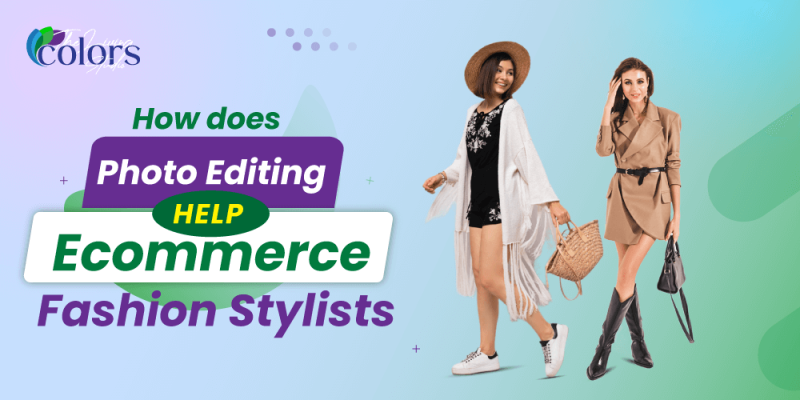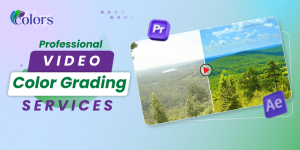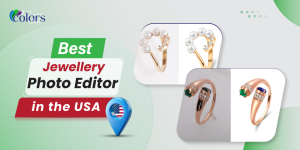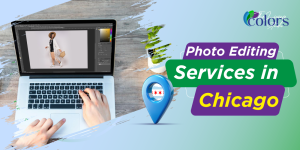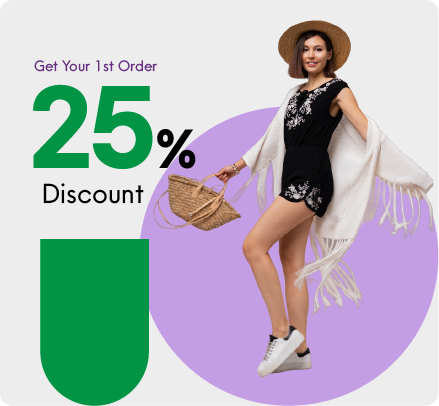The global e-commerce fashion industry is forecast to reach an overall market value of 781.5 billion U.S. dollars. According to the research, the industry is expected to reach a value of over 1.6 trillion U.S. dollars by 2030.
E-commerce fashion stylists are the unseen architects of visual success. These professionals curate, style, and present apparel in ways that captivate shoppers, but their work remains incomplete without one critical partner: professional photo editing services.
How does photo editing help e-commerce fashion stylists? That is the answer we will find in this blog.
Table Contents
What Is an Ecommerce Fashion Stylist?
Modern-day customers always want trendy, fashionable apparel so they don’t get outdated and left behind. So they continuously look for stylish products, and an e-commerce fashion stylist’s role comes into play here.
They provide personalized style recommendations to customers on behalf of the brands through online platforms. Their talent lies in picking the right accessories and providing personalized styling advice based on a person’s unique body type, preferences, and fashion trends.
These stylists work behind the scenes to enhance a brand’s digital offerings by improving product presentation, enhancing user experience, and increasing sales. Ecommerce fashion stylists may also assist brands with the aesthetic direction of photoshoots, product descriptions, and visual merchandising on websites.
The Symbiosis Between Ecommerce Fashion Stylists and Photo Editors
The fusion of a professional photo editing expert and an ecommerce stylist is like Gojita (the photo editor is Goku and the fashion stylist is Vegeta). When these two merge, they can make something out of this world.
Defining the eCommerce Fashion Stylist’s Role
Ecommerce fashion stylists bridge the gap between physical garments and digital appeal. They:
- Select clothing combinations that align with seasonal trends and brand identity
- Style products on models or mannequins to emphasize fit and movement
- Coordinate props, lighting, and angles to create aspirational visuals
- Ensure consistency across a brand’s entire product catalog
Yet, even perfectly styled shots face limitations: uneven lighting, distracting backgrounds, or minor imperfections invisible to the naked eye but glaring in 4K displays. This is where photo editing becomes the stylist’s digital darkroom, refining images to meet the exacting standards of online shoppers.
Why Photo Editing is Non-Negotiable in Fashion eCommerce?
Photo editing is a non-negotiable process not only for fashion e-commerce but also for the entire e-commerce platform. Its importance is greater in fashion e-commerce.
- 75% of online shoppers prioritize product images over descriptions when purchasing.
- 22% of returns occur because items appear different online versus in person.
- Sportswear brands using 8+ model images per product see 34% higher conversion rates than competitors using static shots.
These statistics underscore a harsh reality: no matter how skilled the stylist, unedited photos risk alienating customers and damaging brand credibility.
5 Photo Editing Techniques Every Fashion Stylist Needs
1. Ghost Mannequin Editing: The Invisible Fit Model
The ghost mannequin effect removes mannequins while preserving garments’ natural drape and structure. Advanced editors layer multiple shots (front, back, and interior) to create 3D-like visuals showing:
- Neckline and shoulder seams
- Waistband elasticity
- Fabric flow during movement
High-end brands using this technique report 28% fewer size-related returns compared to flat-lay photography.
2. Precision Color Correction
Human eyes perceive colors differently across devices, so professional editors make precise adjustments to ensure consistency. They use Lab color space adjustments for accurate hue matching and histogram balancing to retain detail in both dark and light areas.
On the other hand, delta-E measurements ensure color deviation stays below 2.0 from the physical product. A 2025 survey revealed that 63% of luxury shoppers would abandon their carts if product colors didn’t match the website photos, underscoring the importance of color accuracy.
3. Dynamic Shadow Creation
Authentic shadows help anchor products in reality, and editors carefully analyze elements like the direction of the light source in raw photos, surface textures (such as the reflectivity of velvet vs. silk), and ambient light temperature (typically 5500K for studio accuracy).
Brands that use synthetic shadows in their images have reported a 19% higher engagement rate on lifestyle shots, emphasizing the importance of realistic lighting for capturing customer attention.
4. Fabric-Specific Retouching
| Fabric Type | Editing Focus |
| Denim | Enhancing stitch contrast, preserving wash patterns |
| Lace | Sharpening floral motifs without over-saturation |
| Silk | Mimicking natural sheen while eliminating glare |
| Knitwear | Accentuating texture depth, repairing pulled threads |
A/B tests show fabric-detailed edits increase time-on-page by 41% for apparel product listings.
5. Model Image Optimization
When using live models, editors refine skin tones to enhance natural beauty without creating a “plastic” look. They also adjust hair flyaways, ensuring the hair maintains its natural volume, and smooth out fabric pulls caused by garment pins or clips. A 2024 case study revealed that retouched model images resulted in a 17% higher click-through rate than unedited ones, highlighting the impact of professional photo editing on engagement and sales.
How Top Brands Leverage Editing-Stylist Partnerships
Recently, most famous brands have recognized the partnerships between editors and stylists. They produce more style-focused, multiple combinations of products with high-quality professional product images edited by fine experts.
Brands nowadays monitor which products are not performing well. They then point out that they take help from stylists to market themselves uniquely so that their sales grow. All of a brand’s products won’t get the taste of being an instant hit like the Air Jordan shoes. Some designs might not work, and an ecommerce stylist’s job is to make them work.
Final Thought
For eCommerce fashion stylists, professional photo editing isn’t just polish—it’s the difference between garments that sell and those that languish in digital obscurity. By combining artistic styling with technical retouching, brands can:
- Boost conversions through visually persuasive imagery
- Build trust via accurate, consistent presentations
- Future-proof their visual assets against evolving tech standards
In an era when 40% of shoppers share product images on social media, investing in editor-stylist synergy isn’t optional—it’s the cornerstone of modern fashion eCommerce success.

